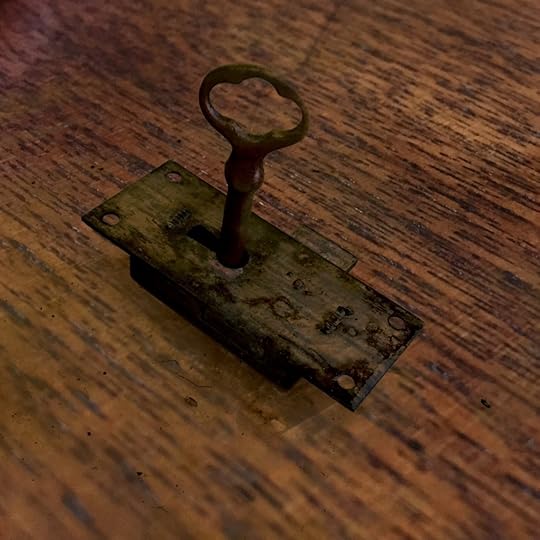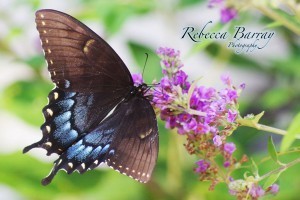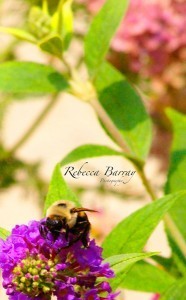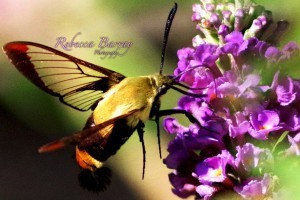Rebecca Barray's Blog
June 19, 2015
Photography Craft: Exposure Triangle, Overview
The concept of exposure, in relation to digital photography, can be tricky. There are three factors that contribute to what is commonly referred to as the Exposure Triangle. This post is just an introduction. I’m considering more in-depth posts for aperture, ISO, and shutter speed, if there is any interest. Leave a comment below and let me know if you found this post helpful and/or if you’d like to see more posts on digital photography. My examples and descriptions are specifically for digital photography, although the principals apply to film photography, as well.
Overview
In photography, exposure is defined as the amount of light that reaches a digital camera’s sensor or the frame of film inside a traditional camera. There are three things that can affect exposure: aperture, shutter speed, and ISO. In this post, I’ll briefly describe each one and how it affects your pictures. If you’d like to know more about the specifics, leave a comment below and I’ll go into more detail in later posts.
There is an excellent graphic depicting the Exposure Triangle on photographer Michael P. Young’s blog. I’ve posted it here, with his permission, for your viewing and learning pleasure.

The Exposure Triangle by Michael P. Young
Aperture
The aperture is the opening through which the light passes on it’s way to the sensor. The aperture designation, measured in f-stops like f/2.8 or f/22, is inversely proportional to the opening size and the amount of light entering the camera. So, to put it more simply: the smaller the number (f/2.8), the wider the opening and the more light that reaches the sensor. A larger number, such as f/22, indicates a smaller opening and therefore less light reaching the sensor. Aperture also affects the depth of field. A large opening (small value) gives you a shallow depth of field and anything that is not the same distance from the camera as the focal point will appear blurry. A small opening (large value) will pull more of the background and foreground into focus.
Shutter Speed
Shutter speed is the amount of time that the shutter is open and the sensor is exposed to the light. Longer, slower shutter speeds let in more light than shorter, faster ones. Faster shutter speeds are good for freezing movement and action. These are great for photographing sports, or hummingbirds (one of my favorites). With slower shutter speeds, movement will cause blur. That’s not desirable when holding your camera by hand; I sure don’t know anyone that can hold a camera perfectly still for very long at all. But, if you have a tripod or can set your camera on a stationary surface, like a table or even the ground, you can use a slower shutter speed and still get a clear picture. This is handy for blurring water in a waterfall, or photographing in very low light conditions, like at night.
ISO
ISO is the sensitivity of the sensor to light. A smaller number, like 100, makes the sensor less sensitive to light, so only the brightest lights are captured and the image is crisp and clear. At a larger number, such as 3200 or 6400, the sensor is more sensitive to light, and will often pick up stray light, making your image look grainy.
All Together Now: Exposure
Aperture, shutter speed, and ISO work together to determine the exposure of your photo. When set to auto, your camera decides the best values for the three settings based on lighting conditions. But once you know what each means, and how changing it affects the image, you can tweak the settings to fit your specific purpose. Here is a real life subject that a friend of mine had problems photographing: the moon.
When you take a picture of the moon with your camera’s settings on auto, you end up with a solid black picture with one blurry white spot. Overall, there isn’t much light available at night, so your camera automatically increases the exposure. The moon, however, is very bright in the night sky, so that part of your image is overexposed. To compensate for the brightness of the moon, you need to reduce the camera’s exposure. You can do this by changing any combination of the three components of the exposure triangle. I do this simply by trial and error. First, I increase the shutter speed, thereby decreasing the time that the sensor is exposed to the light, and take a photo. If the resulting image is still too bright, I move the ISO down to 200 or 400, and try again. If the moon is still too bright, I can increase the aperture value, thereby decreasing the size of the opening and the amount of light that gets to the sensor. Keep in mind that when you decrease the exposure enough that you can see the moon clearly, the rest of your image will be very underexposed and show up as only blackness. Any trees or stars that may have appeared alongside your bright, blurry moon in the original photo will not be bright enough to show up when the moon is clear.
This photo was taken on my Pentax K-30 using a telephoto lens zoomed all the way in to 300 mm, with an aperture of f/5.6, a shutter speed of 1/1000th of a second, and an ISO of 200.
I work very much by trial and error. I start with the camera on auto and look at the photo that results. Then, I can decide how I want to change the image from there: more/less motion blur, more/less of the image in focus, more/less grain, and more/less brightness. Then, I shoot it again. This is fine if you like experimenting and have the time. It can be bothersome if you are photographing something that is extremely short-lived, like two toddlers playing nicely together. Conditions like these are over very quickly, so you must make your best guess at the settings, or just go with auto.Most of the time, shooting under normal lighting conditions, auto settings will work just fine. But hopefully, you’ve learned a few things here about the exposure triangle, and will know how to tweak the camera’s settings on those occasions when you want a more unique photograph. Another great site for learning about all topics photographic is Digital Photography School. It’s where I go when I have questions… 
April 14, 2015
Grass
April 7, 2015
The KEY…
March 29, 2015
Pollinators
January 17, 2015
Toast, Veronica’s drawing challenge
Hi!
And a warm welcome to those who’ve arrived via Veronica’s post. I don’t draw often, so I usually just admire V’s works and don’t really consider joining in. But this week, Veronica called me out, tagging me in a post and specifically inviting me to join the fun.
So, I did.

I drew this on my iPad, with Paper and Pencil. (Paper is the app and Pencil is the stylus, both from 53.)
Feel free to join the fun, and be sure to check out the others participating in the challenge this week: Veronica, Katrin, Barbara, Marian, Kristen, Roberto, Renee, Nadine,Patrice, Lucia, Anneke, Eric, Joke, Linda, Sabine, Tammie, Mano, Stefanie, Carole, Renilde, Susan, Kelly,Dawn, Jennifer, Melodye, and Dot.
November 1, 2014
Do You NaNoWrimo?
Yes, I’m a little crazy for taking up the challenge of writing 50,000 words for a new novel this month. Yes, I know I’ve tried a few times before and always fallen woefully (WAY!) short of that lofty goal. Yes, yes, I know the definition of insanity! Moving on…
But (BUT!), I also know that I’m more prepared than I’ve ever been in the past. And (AND!) I’ve got some great (relentless) friends who have vowed to motivate (force) me to actually finish this year. But most important of all: I talked to hubby about it and feel like he is (mostly) supportive and willing (just a bit) to help out with the house and kids so that I can have (a little) more time to write.
And guess what, folks. Yup, it’s midnight and I made met the word count goal for the first day. Just look at that beautiful NaNo widget on the right and you can see for yourself. Woo-Hoo!! Isn’t that a beautiful little green square for the 1st of November? Yeah, I thought so, too. And that’s my user name at the top, so feel free to add me as a writing buddy if you’re registered at NaNoWriMo.org and help keep me motivated with a gentle nudge (or shove) toward writing if my word count falls too far behind.
I’d love to hear how each of you are handling this crazy challenge after the first day. Be sure to drop me a comment and let me know! The next time I feel the need for procrastination, I will post a summary of the book I will (WILL!) be finishing this month.
In the meantime…
Just keep writing. Just keep writing. Just keep writing, writing, writing. 

September 24, 2014
Wicked Words
Just in time for Halloween, 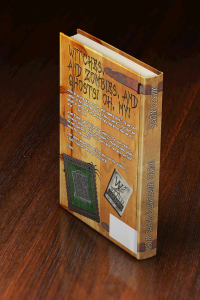
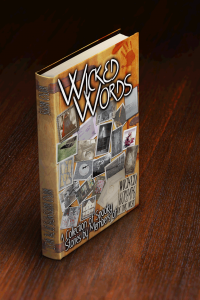 Wicked Words: A Collection of Spooky Stories by Members of Wicked Wordsmiths of the West, will be available through Amazon on September 28 for Kindle. You can pre-order it here!
Wicked Words: A Collection of Spooky Stories by Members of Wicked Wordsmiths of the West, will be available through Amazon on September 28 for Kindle. You can pre-order it here!
Get your paperback copy of Wicked Words: A Collection of Spooky Stories by Members of Wicked Wordsmiths of the West from Amazon now!
**ALL proceeds go directly to Wicked Wordsmiths of the West, a nonprofit organization in Huntington, WV, dedicated to promoting an interest in writing and furthering the skills of local writers.**
August 25, 2014
Procrastination
What I’m usually doing when I’m supposed to be doing something else…
If I’m on my computer, I’m probably playing with photoshop. Recently, I found some really old (1880s!!) cabinet photos in an old photo album, in an old chest full of stuff that had belonged to my grandmother-in-law. A lot of them were faded and cracked, but there was one of a family that wasn’t too bad, just a bunch of small white spots where the image had flaked away from the paper. So, I scanned it and touched it up, playing with it just for fun. You can see a before-and-after in the image below.
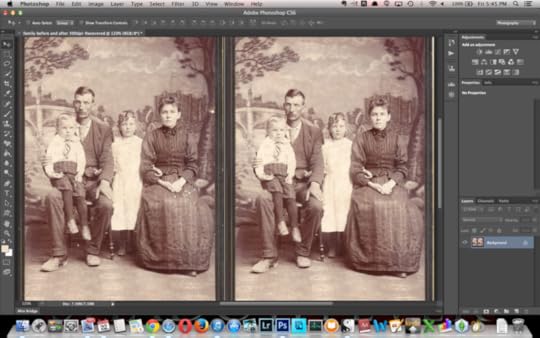
And if you look across the bottom of my screen in the image, you can see that there are also a couple games at the end of my dock. I try not to spend too much time on those, but it seems like a few minutes of playing turns into a few hours before I know it.
 If I’m not on my computer, I’m probably reading (most likely on my kindle). This is my biggest distraction; I’ve lost entire days! When I’m reading a book or series, I hate to stop. So I pretty much read every single moment until I finish. I can even get a little obsessive; just ask my family. I tend to snap when interrupted. Oops.
If I’m not on my computer, I’m probably reading (most likely on my kindle). This is my biggest distraction; I’ve lost entire days! When I’m reading a book or series, I hate to stop. So I pretty much read every single moment until I finish. I can even get a little obsessive; just ask my family. I tend to snap when interrupted. Oops.
Posted in response to the Wordsmith Studio Weekly Creative Prompt: Procrastination. Thanks, Kasie!


August 7, 2014
Fairy wings make me wanna…
June 19, 2014
Sport
I loved playing softball as a child. I wasn’t very good at it, but I always had fun. Doesn’t this look like a girl having fun?
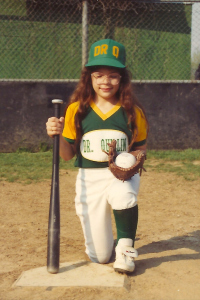
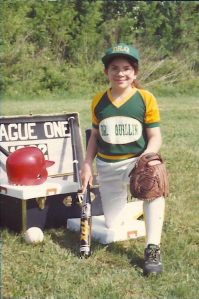
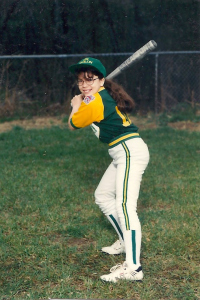
But when I got a little older, I got a little better. I even made the all-star team.
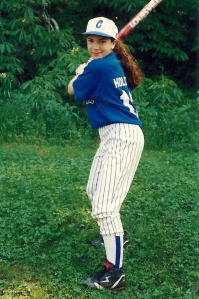
I guess practice and repetition really does help.
Which is why I really should be writing and reading every day. I guess I’d better get back to it…
Becca ;)
Wordsmith Studio Prompt: Sport





